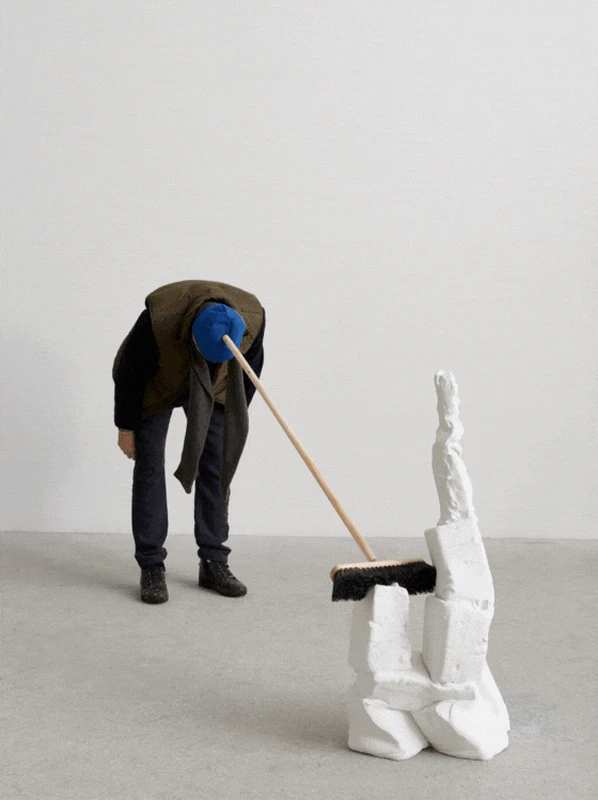Erwin Wurm: Surrogates
15 Feb-14 Apr 2024
PV 15 Feb 2024, 6-8pm


Three series of works shown for the first time: Paradise, Mind Bubbles and Dreamers, alongside key developments in his iconic One Minute Sculptures.
On view concurrently with the artist’s major institutional survey at Yorkshire Sculpture Park, Wakefield.
Across the exhibition, the familiar is rendered unfamiliar through Erwin Wurm’s playful treatment of the sculptural principles of ‘two- and three dimensionality, mass, volume, skin and surface, movement and time’. Just as he has previously added volume to cars and houses to reconfigure our relationship to the objects as capitalist status symbols, here, the form of a woman’s high-heeled shoe is distorted almost beyond recognition. The heel of the shoe raises the height of an individual in what the artist describes as ‘an act of social play’. With its new swollen appearance, the form assumes a flesh-like quality that destabilises ontological boundaries between what is worn on the body and the body itself.
As is characteristic of Wurm’s practice and encapsulated in the exhibition title, Surrogates, this idea of substitution acts as a social commentary that cuts through his often humorous treatment of the objects and rituals of everyday life. He conceives of the disembodied Substitutes as a way to call attention to the role of the individual in the rapidly changing social, political and environmental conditions of the contemporary world, and particularly the potential absence of humanity in post-anthropocentric futures. The absurd becomes a tool through which Wurm asks us, in his own words, to ‘look at the world from a different perspective’, to imagine parallel realities and alternative ways of being. Appearing as disembodied figures, composed solely from aluminium garments arranged as though worn on a body that is curiously absent, the garments, poses and colour palettes highlight the particular social values we might ascribe to what an individual chooses to wear. The sculptures become ‘substitutes’ or ‘surrogates’ for the human body, whose volume, mass and form is defined by the ‘second skin’ of the aluminium clothes.
Asserting his investigative approach to the concept of sculpture within art-historical traditions, elsewhere in the exhibition Wurm employs his use of clothing to build bodily forms in response to two canonical works of art: Donatello’s Penitent Magdalene (1440) and Auguste Rodin’s Monument to Balzac (1891–97). Repentance (After Donatello) (2023) emulates the folded robe that enshrouds the emaciated body of Mary Magdalene in the Italian Renaissance sculptor’s wooden original. Rendered in painted aluminium, the cascade of pale pink, knitted jumpers is finished with a pair of white trainers standing atop a bucket.
Addressing another aspect of the human condition, the Dreamers (2024) and Mind Bubbles (2024) give form to psychological thought through bodily associations. In the Dreamers, realistic human limbs grow from oversized white pillows in playful references to the unconscious. Mind Bubbles place ovular forms atop spindly, cartoonish legs in anthropomorphic imaginings of the thought bubbles found in comic strips. Wurm describes them as ‘a symbol of an idea or a specific thought, which is not described.' These new series of sculptures are presented alongside a group of the artist’s One Minute Sculptures, which epitomise Wurm’s innovative approach to time-based, participatory sculpture.